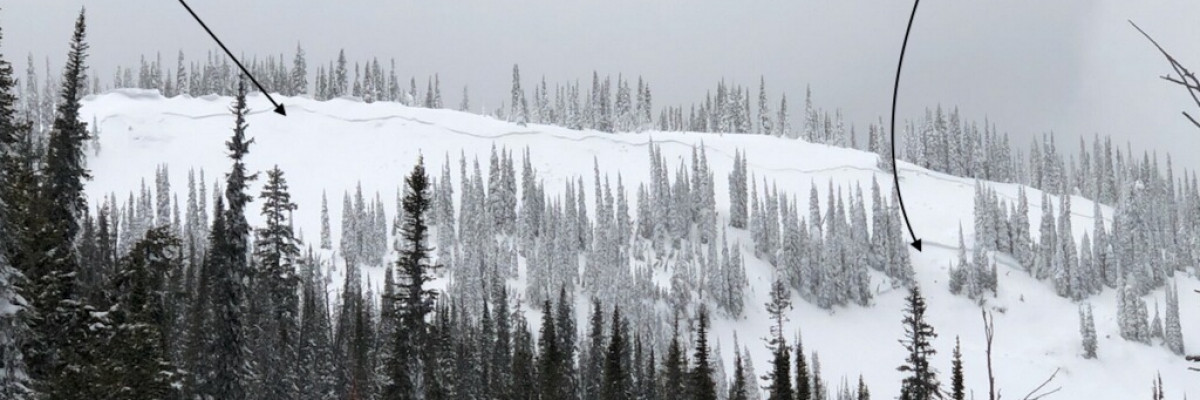The avalanche danger for the west central Montana backcountry is CONSIDERABLE. Dangerous avalanche conditions today. Human triggered avalanches are likely, and natural avalanches are possible. Sticking to simple low angle terrain is critical for the complex problems we have today.
Good morning, this is Travis Craft with the West Central Montana Avalanche Center’s avalanche advisory for January 9, 2020. This danger rating does not apply to operating ski areas, expires at midnight tonight, and is the sole responsibility of the U.S. Forest Service.
Weather and Snowpack
Mountain temperatures range from 11 F to 22 F in the region. In the Bitterroot, winds are 8 mph with gusts of 11 out of the SSW. In the northern part of the advisory area, winds are 11 mph and gusting 19 mph out of the W. Snotels are reporting between .2 and .4 inches of SWE overnight for 2 to 4 inches of new snow.
The snowpack is trying to adjust to the new load of snow. Yesterday, we saw evidence in natural slides from the last two days that our buried weak layers can still not be trusted. We are still getting propagations in our pit tests. The weight of a skier or rider on a steep slope(>30) is likely to be the tipping point to cause a large dangerous avalanche.
The primary avalanche problem is persistent slabs. The buried surface hoar is now 3 to 4 feet deep in our snowpack. We got a report of a natural slide yesterday that released in the upper 2 feet of new snow and then stepped down to this layer. The depth hoar near the bottom of the snowpack is still reactive in our pit tests.
The second avalanche concern is wind slabs. There were strong winds yesterday, and we saw active wind loading of leeward slopes. Avoid wind loaded slopes. Even a small wind slab can tip the scales and step down into the persistent weak layers and cause a large dangerous avalanche.
The last avalanche problem is storm slabs. New snow takes time to bond to old snow surfaces. These slabs, if triggered, can step down into deeper weak layers and cause a large dangerous avalanche.
The avalanche problems we have today are complex, so choose simple terrain. The choice for today are slopes less than 30 degrees that are smooth, without likely trigger points(rocks, cliff bands, and convexities) and sheltered from the wind.
The bottom line: The snowpack structure can not be trusted. The buried weak layers are capable of producing large dangerous avalanches. Choose slopes less than 30 degrees that are not connected to steeper terrain. You can trigger an avalanche from below, the side, or from a ridge. You can trigger an avalanche from flat ground if the slope is connected to steep terrain (> 30 degrees). The riding is good on simple low angle slopes. Get the forecast. Carry a shovel beacon and probe. Only have one person on a slope at a time. Take a class, here is a link to our events and classes.
Avalanche and Weather Outlook
Banded snow showers today with gusts in the 30 mph above 6000 feet. See the forecast. A short break from snow on Friday.
The avalanche danger will rise with new snow and more wind. Pay attention to red flags such as cracking, collapsing, wind transported snow, and recent avalanches.
I will issue the next advisory on January 11, 2020.
Any and all observations are greatly appreciated. If you get out in the mountains please send us information here. Thank you very much to those of you who have been sending in observations as it is very helpful.
Ski and ride safe.














